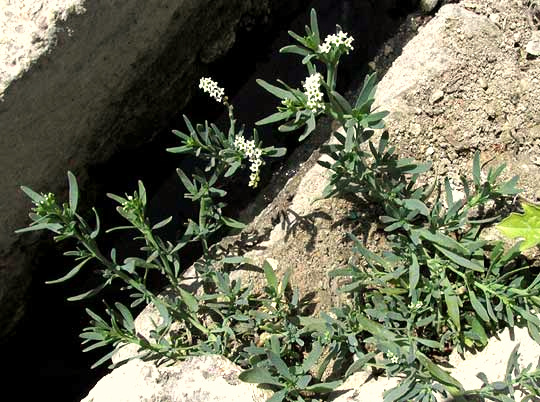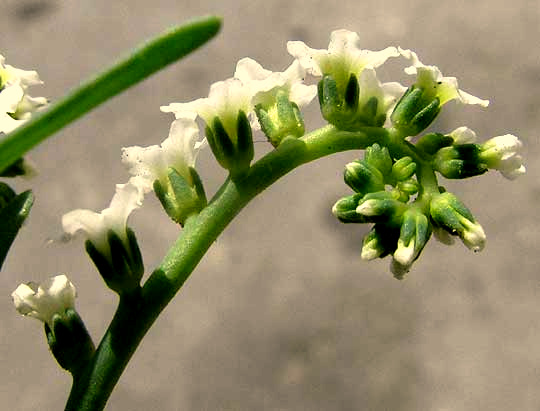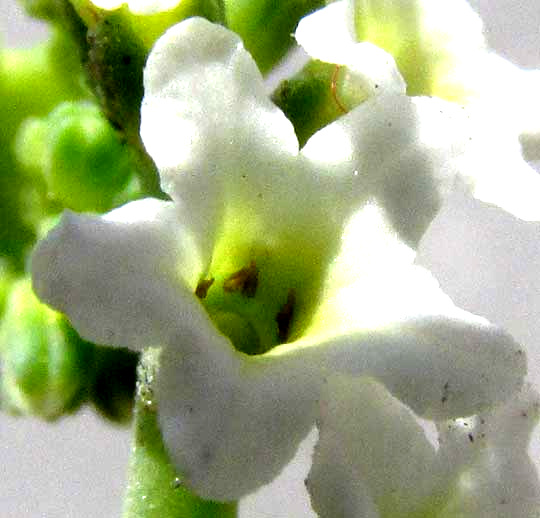Excerpts from Jim Conrad's
Naturalist Newsletter
from the May 17, 2015 Newsletter issued from Río Lagartos, on the Yucatan Peninsula's northern coast (~N21.60°, ~W88.16°), Yucatán state, MÉXICO
SALT HELIOTROPE
Along Río Lagartos's sidewalks, in abandoned lots, at the base of buildings, along streets and the road through the mangroves to town, nowadays a very common herb draws attention to itself because it's one of few herbaceous plants flowering during these super-dry, super-hot, end-of-dry-season days. Below, one is shown leaning over the open gutter of a street at the edge of town:

Below, you can see the inflorescence's curling-under rachis bearing flowers on just one side:

A peep into a flower's throat showing brownish, triangular, pollen-producing anthers atop short filaments attached to the corolla tube's wall is shown below:

Seeing the curling-under rachis with tiny, bell-shaped flowers arising only on one side, with the oldest flowers at the rachis's base, I could guess that this was a species of heliotrope. That's because the 300 or so species of the genus Heliotropium are configured exactly like this, though their colors can range from white through the violet hues to dark purple.
Heliotropes are members of the Borage or Forget-Me-Not Family, the Boraginaceae, a family embracing about 3000 species worldwide, and producing many garden favorites. Despite there being maybe 300 heliotrope species, our sidewalk plants were easy to identify simply because they were completely hairless (glabrous) and their green parts displayed a slightly glossy, silvery bloom, a condition known as being "glaucous."
In our part of the world, if you're a glabrous, glaucous heliotrope, you're HELIOTROPIUM CURASSAVICUM, known to occur mostly along coastlines and other salty spots in warm regions nearly worldwide. Its predisposition for salty soil earns it common names such as Salt Heliotrope and Seaside Heliotrope. It's native to the tropical and subtropical Americas, though it weedy tendency enables it to pop up in inland places where it's not expected.
In our area it seems to flower year round. Being such a full-time bloomer and capable of enduring hot, dry and salty conditions, it's a natural for planting where people are wisely abandoning their grassy lawns in favor of greenery needing little water. In some places it's called Quail Plant because ground birds feed on its fruits.